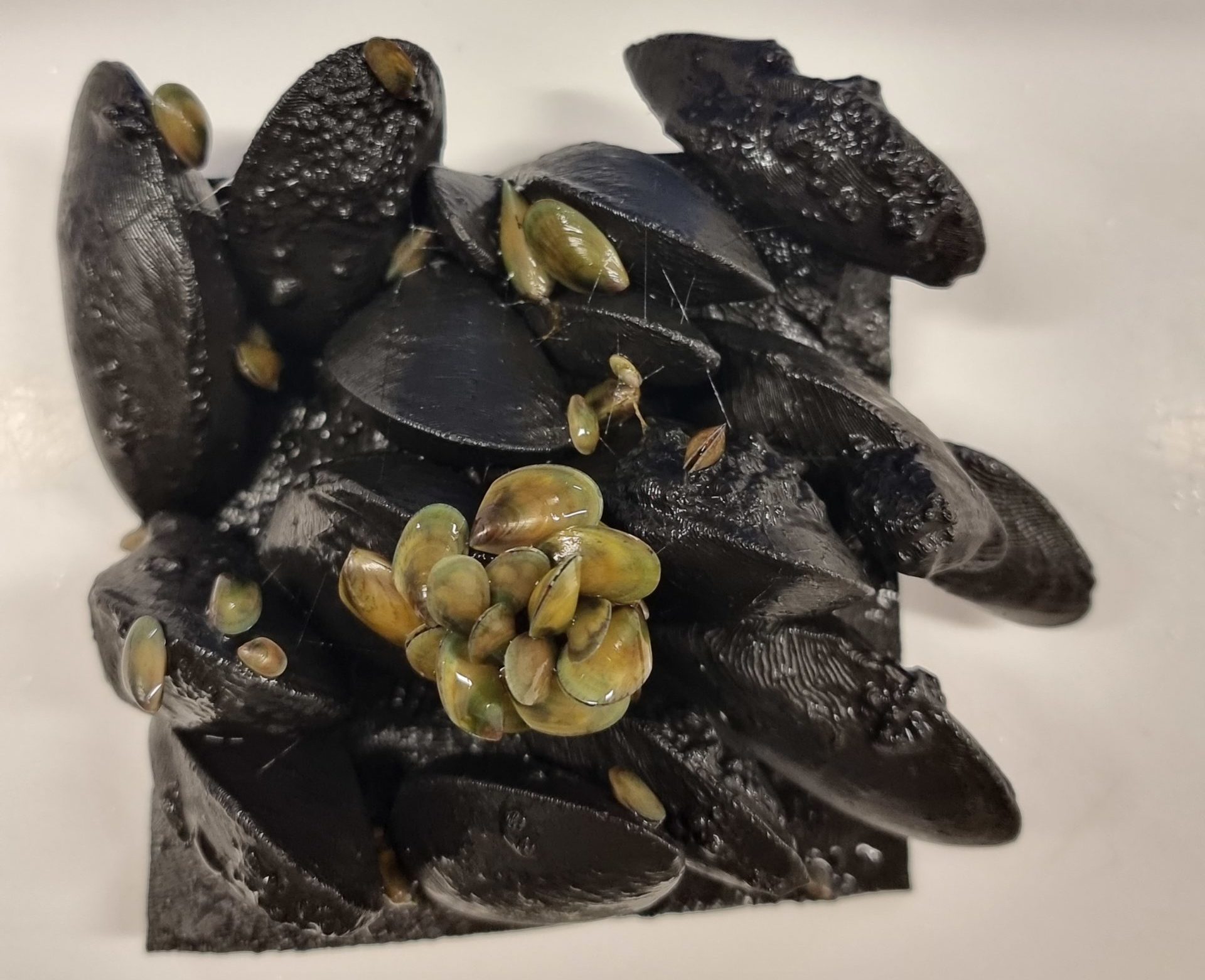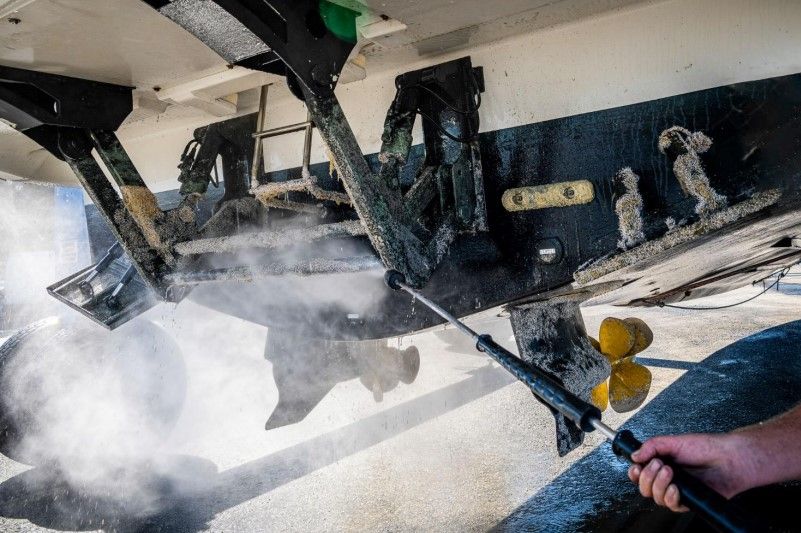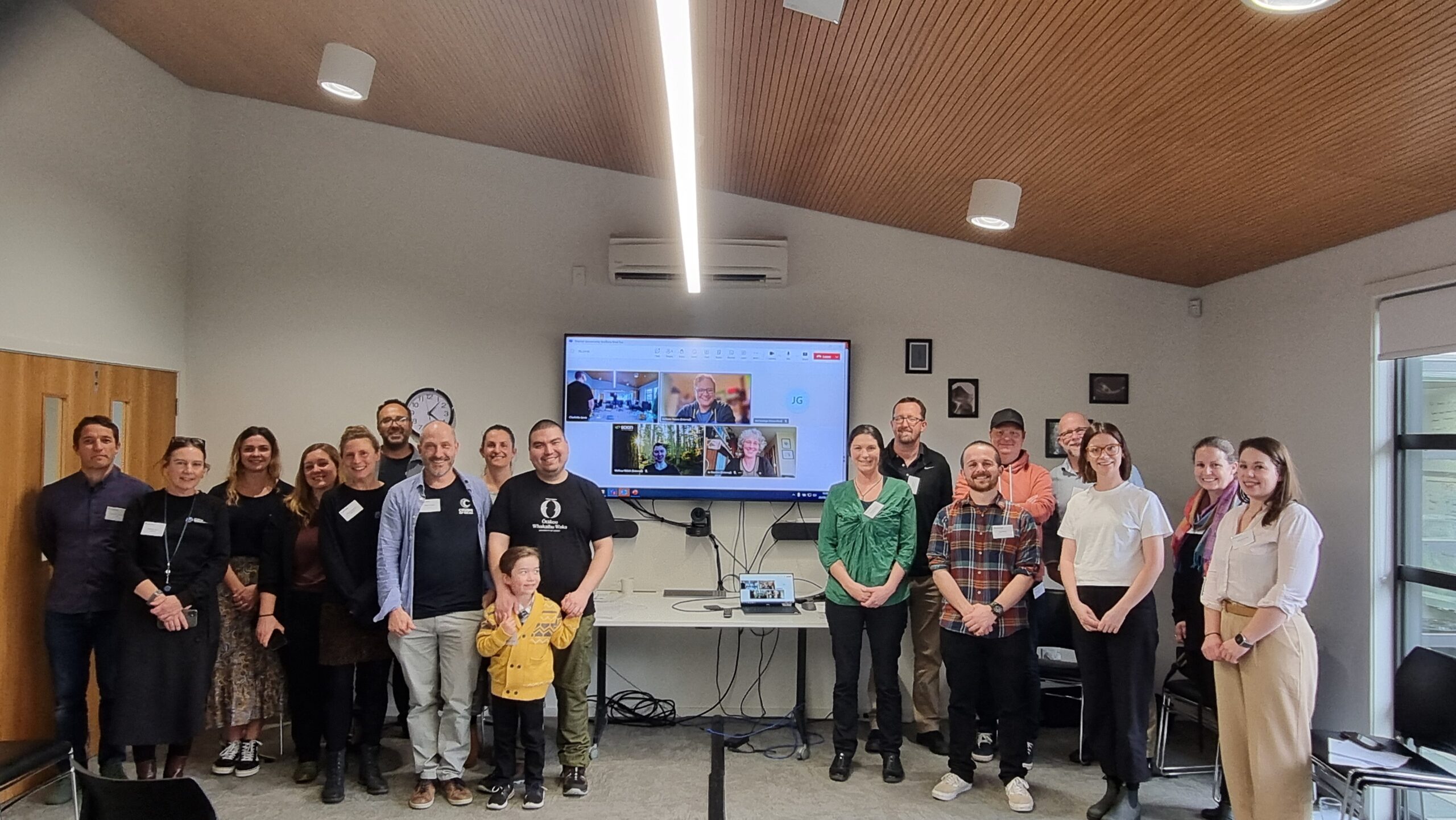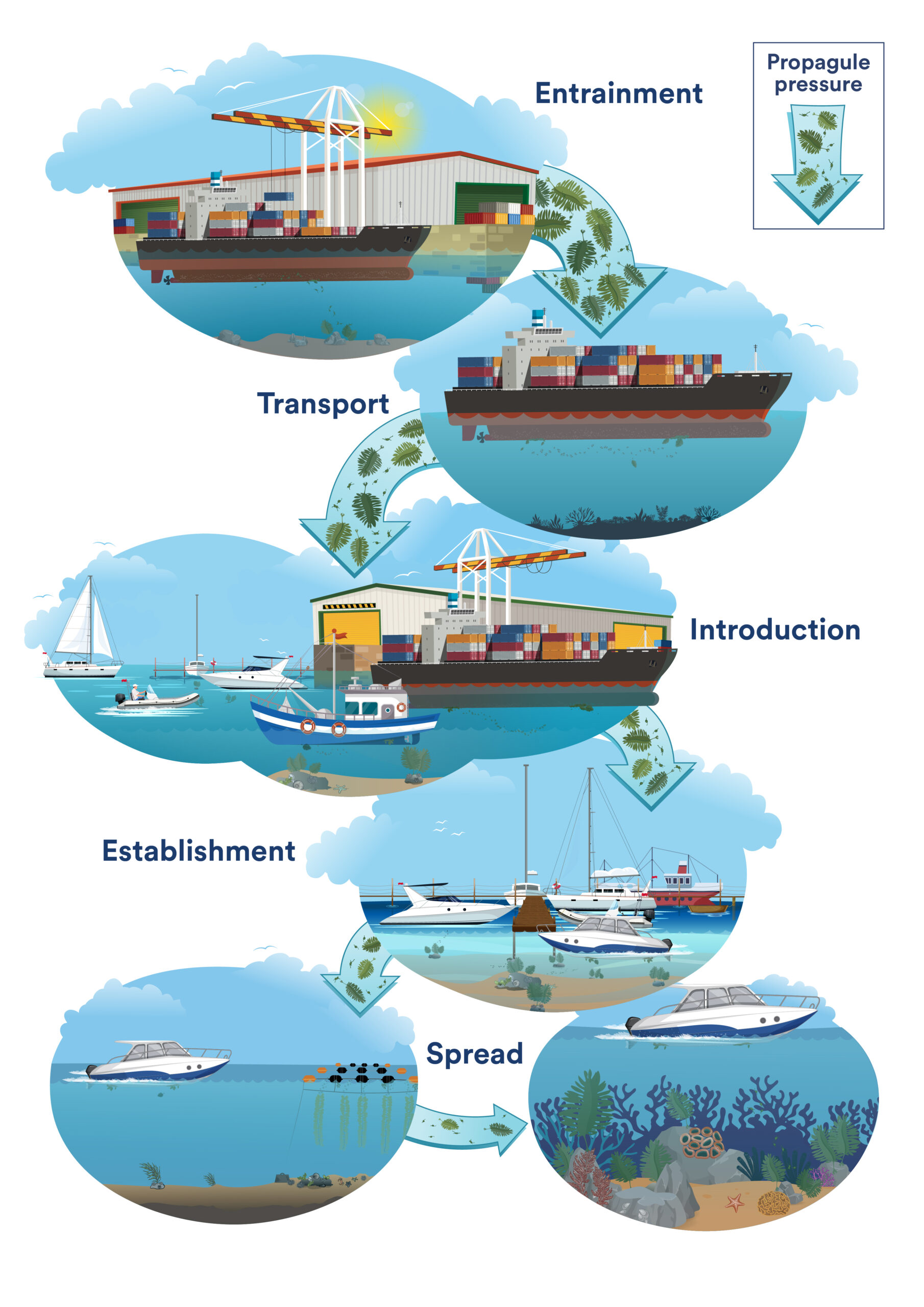Last year over 700 boat owners who have non-trailered boats moored in marinas around Aotearoa…
Where do mussels like to call home?
One of the key objectives for the Marine Biosecurity Toolbox is to better understand the habitat requirements of the green-lipped mussel (Perna canaliculus) to design eco-engineered structures that would give this native species a competitive advantage to establish in artificial habitats over invasive species.
To begin to understand their habitat, early in 2020 our team went to a healthy mussel reef in Patuharakeke Te Iwi Trust’s rohe in Northland, and scanned mussel reefs in a variety of different states (with and without mussels) to create 3D prints of rocky reef structures to examine mussel fine-scale substrate preference.

A healthy patch of mussels on a rocky reef outcrop
Since then, material science experts at Scion have been hard at work rendering and printing a number of these scans both with and without mussels. The scans can’t capture the full detail of what we see live, which creates holes in the scans that need to be filled in manually using specialized computer programs. To do this, each mussel is individually removed from the model, has its holes filled and is then returned at the correct orientation to the model- not a task for the impatient souls among us. The prints were completed using a PLA printer with 0.1mm detail. Some of these tiles can take ~40 hours to print and need to be printed with additional support to make sure the elements of the print are stable and do not break off during the printing process. These supports are then dissolved in water after the final print is completed. We ended up with over 40 test and final prints, 35 of which finally made it into the water with some real live, green-lipped mussels!

Artificial mussel reef fresh from the 3D printer
To find out what features of the reef mussels did or did not like, we dropped baby green-lipped mussels on several types of 3D printed tiles in seawater tanks and saw where they went after 24 hours. We repeated this experiment 3 times, the third time using much smaller mussels than the first two trials to see if this preference for areas of the substrate changed with size.

After 24h in an aquarium, mussels appear to have made a home around our experimental mussels
Locating the mussels after 24 hours proved difficult from the surface so the water was drained from the tanks, before tiles were photographed and removed. The hidden cracks and crevices in some tiles needed more care and using headtorches we picked out as many mussels as possible and noted where they were before water blasting out any hidden stragglers.

Dayanitha finding the last mussels hiding around the substrate model!
Now that these trials are over the tiles are being dried (and in some cases repaired!) and analysis of photos and data is underway to figure out if there are locations on the tiles that mussels gravitated to, and how we can capitalize on these spaces for iterative design and experiments going forward!





Comments (0)